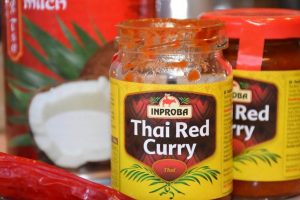What is the best Red Curry Paste substitute?
Looking for a red curry paste substitute? Look no further! I have come up with a list of the top 10 red curry alternatives that will surely spice up your dishes. Whether you’re a fan of Thai cuisine or simply looking for a way to add some heat to your cooking, these substitutes are perfect for you.
Of course you can buy readymade jars of Massaman Curry Paste, or Panang Curry Paste, but I have also deliberatley chosen ingredients that you may already have in your pantry. Think of general ingredients such as tins of tomatoes, garlic, chili flakes, etc. Right, let’s get down to business!
Try using: Curry Paste, Green Curry Paste, Chilli Powder, Chilli Paste, Tomato Paste with Chili Flakes, Turmeric & Chili Paste, Garlic & Chili Sauce, Garlic & Tomato Paste, Curry Powder, or Homemade Curry Paste.
What is Red Curry Paste?
Red curry paste is the fiery magic potion of Thai cuisine. It is made from a blend of red chilies, garlic, lemongrass, ginger, and aromatic spices, all mixed together to create a flavor explosion.
Now, if you’ve ever wondered why it’s called “red” curry paste, it’s not just for show. Those deep red colors come from the red chilies that give it a kick. It’s a cornerstone in Thai cooking, bringing that perfect balance of heat, sweetness, and depth to curries, soups, and stir-fries that I love.
What can I substitute for Red Curry Paste?
Here are some of the best ingredients to substitute the flavor and role that Red Curry Paste provides in your recipes.
- Curry Paste
- Green Curry Paste
- Chilli Powder
- Chilli Paste
- Tomato Paste with Chili Flakes
- Turmeric & Chili Paste
- Garlic & Chili Sauce
- Garlic & Tomato Paste
- Curry Powder
- Homemade Curry Paste
Red Curry Paste substitutes
Curry Paste
Curry paste is packed full of aromatic ingredients that serve as the base for various Asian dishes, adding depth, spice, and complexity. It typically includes a combination of ingredients like chilies, garlic, lemongrass, ginger, and spices. The specific ingredients can vary based on the type of curry paste you choose, such as green, yellow, or massaman.
Now, using curry paste as a substitute for red curry paste can bring a delightful twist to your recipes. Here’s a quick guide on how to incorporate curry paste as a substitute:
- Determine the Type of Curry Paste: Curry pastes come in various types, so choose one that complements your dish. For a red curry substitute, you might opt for a generic or mild curry paste.
- Adjust Quantity: Always start with a smaller quantity of curry paste than the recipe calls for red curry paste. Curry pastes can vary in intensity, so you can always add more to taste, but you can’t take it back out!
- Balance Flavors: If your original recipe calls for the specific sweetness and spiciness of red curry paste, you might need to balance the flavors by adding additional ingredients like sugar, coconut milk, or lime juice.
- Cooking Technique: Just like red curry paste, you’ll want to sauté the curry paste in oil to release its flavors. This step helps the paste integrate seamlessly into your dish.
- Experiment and Taste: The beauty of cooking lies in experimentation. Taste your dish as you go and adjust the seasonings accordingly. If you feel it needs more heat or depth, add a bit more curry paste.
- Be Mindful of Color: Red curry paste contributes to the vibrant color of a dish. If the visual appeal is crucial, consider adding a pinch of paprika or tomato paste to mimic the reddish hue.
Remember, cooking is an art, and substitutions offer room for creativity. Whether you’re making a curry, stir-fry, or soup, using curry paste can infuse your dish with a unique and flavorful twist.
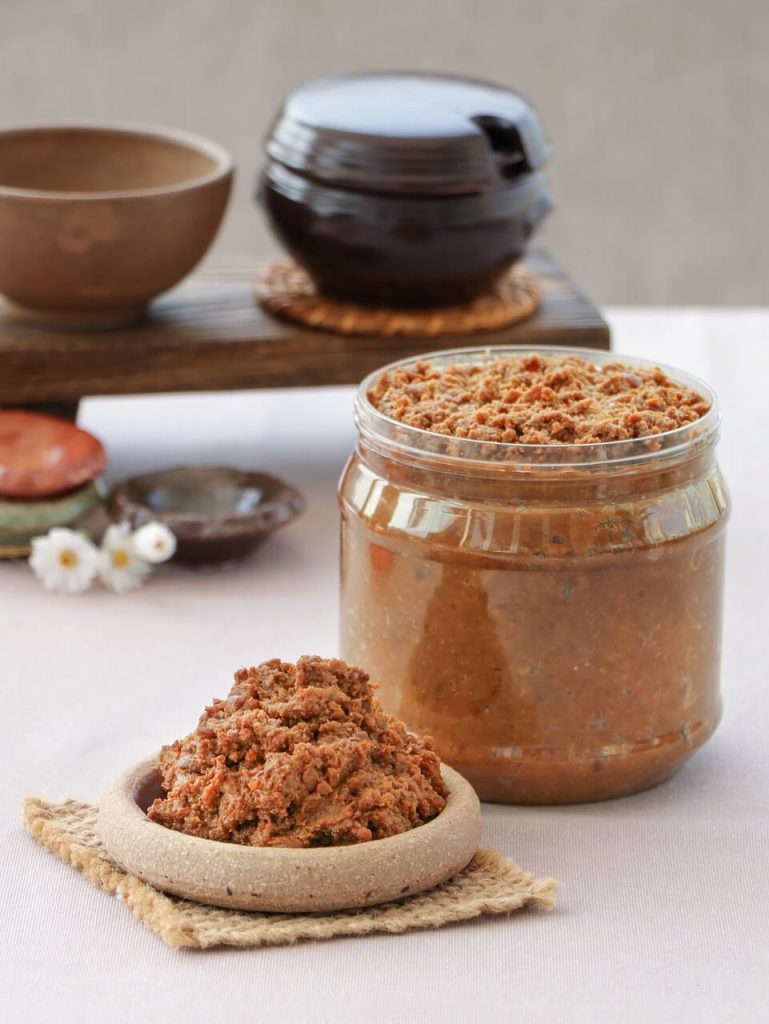
Green Curry Paste
Green curry paste is a vibrant and aromatic Thai condiment that brings a burst of flavor to your dishes. It’s a staple in Thai cuisine, known for its fresh, herby profile and a moderate to high level of spiciness. The green color comes from ingredients like green chilies, cilantro, lime leaves, and basil, creating a delightful and fragrant paste.
Using green curry paste as a substitute for red curry paste can add a different dimension to your recipes. Here’s how you can incorporate green curry paste as a substitute:
- Consider Flavor Profile: Green curry paste has a distinct taste with a focus on fresh herbs and a bit of heat. You need to keep that in mind as it might bring a different flavor compared to red curry paste, which is richer and spicier.
- Adjust Quantity: Begin by using a slightly smaller amount of green curry paste compared to the red curry paste called for in the recipe. You can always add more if needed.
- Balancing Ingredients: Take note of the specific flavors your dish requires. If the original recipe relies on the sweetness and depth of red curry paste, you may need to add ingredients like sugar, coconut milk, or lime juice.
- Cooking Technique: Similar to red curry paste, sauté the green curry paste in oil to release its aromatic flavors. This step ensures that the paste blends well into your dish.
- Experiment and Adjust: Taste your dish as it cooks and adjust the seasonings accordingly. If you feel the need for more heat or depth, gradually add more green curry paste.
- Visual Appeal: Keep in mind that the color of your dish will be green based. So, if you really want the reddish colour, consider adding a small amount of paprika or tomato paste.
Using green curry paste as a substitute can bring a fresh and herby twist to your recipes. It works well in various dishes, from curries to stir-fries.
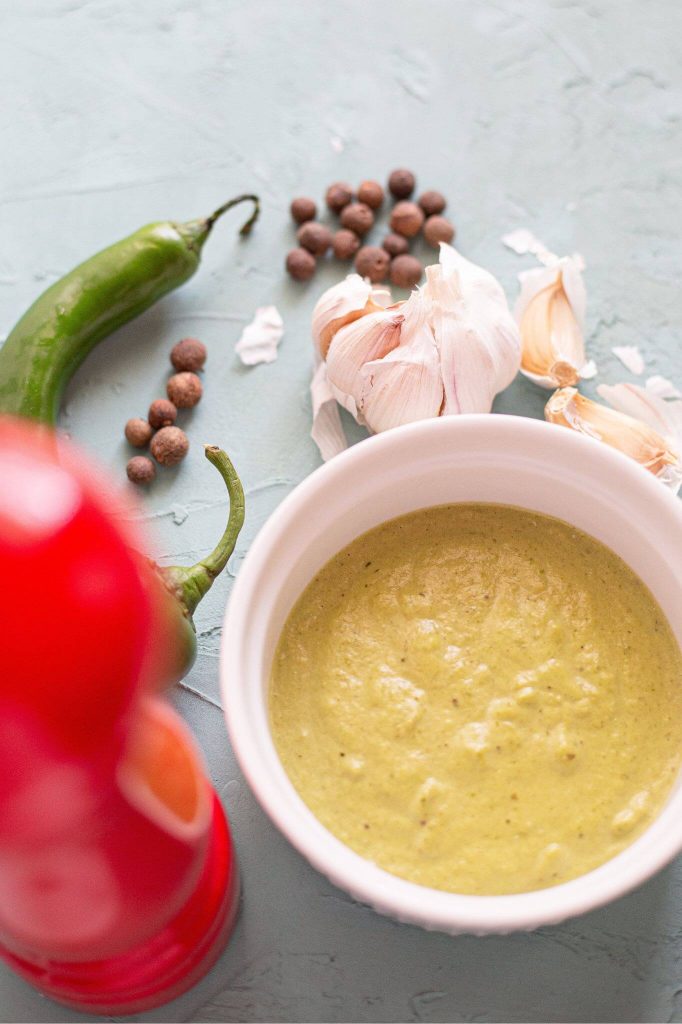
Chilli Powder
Chili powder is a spice blend typically made from ground dried chili peppers along with other complementary spices like cumin, garlic powder, and oregano. The exact composition can vary, but it generally adds heat and flavor to dishes, making it a versatile seasoning in many cuisines.
Now, using chili powder as a substitute for red curry paste can give your dish a spicy kick and depth of flavor. Here’s how you can incorporate chili powder as a substitute:
- Understand the Difference: Chili powder is a dry spice blend, whereas red curry paste is a wet, concentrated mixture. Therefore this substitution will alter the texture and overall flavor profile of your dish.
- Quantity Adjustment: Start with a smaller amount of chili powder compared to the red curry paste called for in the recipe. Chili powder can vary in intensity, so you can adjust according to your spice preferences.
- Balancing Flavors: Consider the flavors of your dish. Red curry paste contributes not only heat but also depth and richness. If that’s not what you are looking for, you might need to add other ingredients like coconut milk, ginger, garlic, and a touch of sweetness.
- Cooking Technique: Unlike curry paste, chili powder doesn’t require sautéing in oil. Instead, you can add it directly to the dish during the cooking process. This avoids the need for oil-based cooking, which is typical when using curry paste.
- Gradual Addition: Add the chili powder gradually, tasting as you go. This allows you to control the heat level and ensure it aligns with your preferences.
- Visual Appeal: Keep in mind that chili powder won’t provide the same vibrant color as red curry paste. If the visual aspect is crucial, you might want to add a small amount of tomato paste or paprika to create the reddish hue.
Using chili powder as a substitute offers a convenient way to infuse heat into your dish, but be mindful of the potential flavor differences. It’s a fantastic option for those who enjoy a straightforward, spicy kick in their recipes.
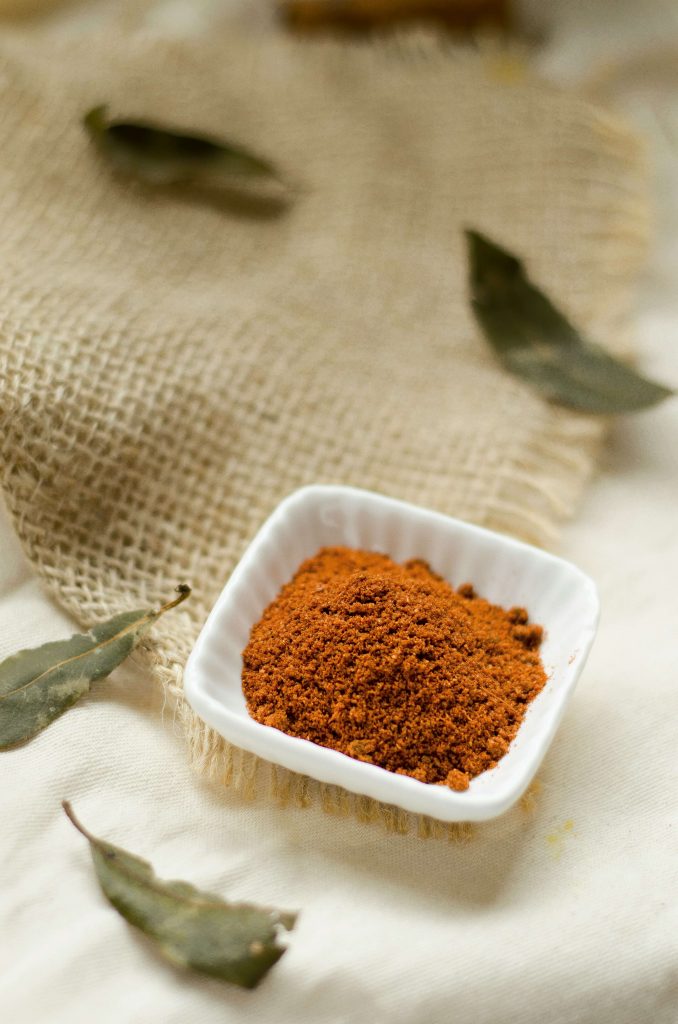
Chilli Paste
Chili paste is a concentrated blend of chili peppers, often combined with other ingredients like garlic, oil, and sometimes vinegar. It’s a condiment that brings heat and flavor to a variety of dishes. There are different types of chili paste, such as sambal oelek, gochujang, or harissa, each with its unique flavor profile.
Now, using chili paste as a substitute for red curry paste can add a bold and spicy kick to your recipes. Here’s how you can incorporate chili paste as a substitute:
- Select the Right Type: Choose a chili paste that aligns with the flavor profile you desire. Sambal oelek is straightforward and fiery, while gochujang has a more complex, fermented taste. Harissa adds a smoky, North African touch.
- Adjust Quantity: Begin with a smaller amount of chili paste compared to the red curry paste called for in the recipe. Chili paste can vary in intensity, so it’s easier to add more later if needed.
- Balance Flavors: Red curry paste contributes not just heat but also depth and richness to a dish. Consider adding ingredients like coconut milk, ginger, and garlic to balance the flavors when using chili paste.
- Cooking Technique: Sauté the chili paste in oil to release its flavors. This step helps it blend well into your dish. Keep in mind that you may need less oil compared to when using red curry paste.
- Taste as You Go: Chili paste can pack a punch, so taste your dish as it cooks and adjust the quantity accordingly. You want to achieve the right level of heat without overwhelming the other flavors.
- Visual Consideration: Keep in mind that chili paste may not provide the same vibrant color as red curry paste. You can always add a small amount of tomato paste or paprika to create a reddish hue.
Using chili paste as a substitute offers a quick and spicy alternative to red curry paste. It’s an excellent choice for those who enjoy bold and fiery flavors in their dishes.
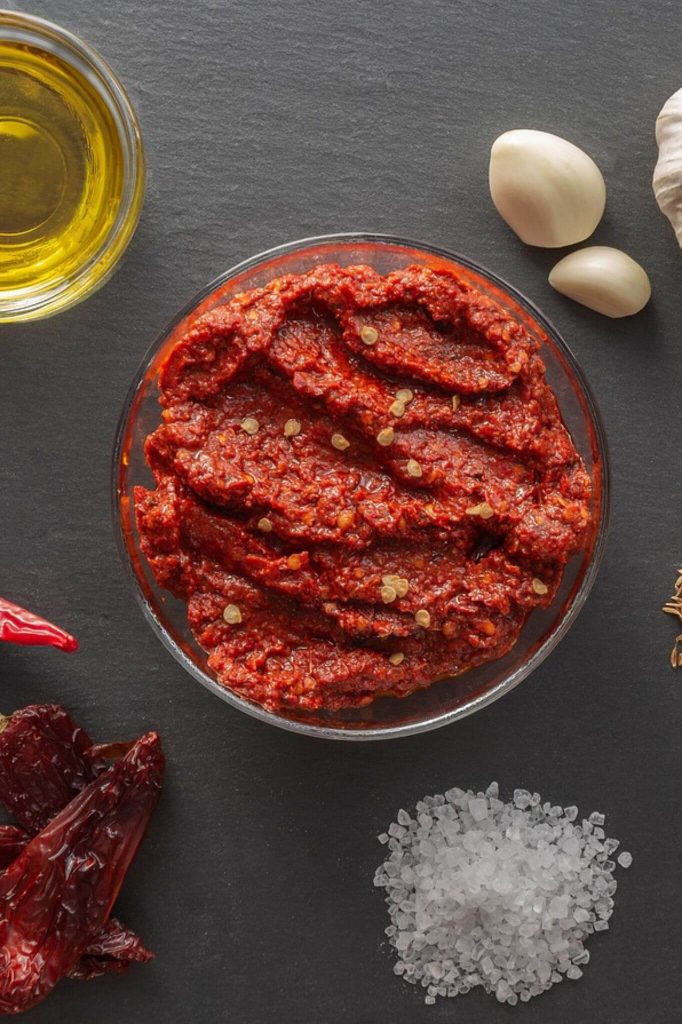
Tomato Paste with Chili Flakes
Tomato paste with chili flakes is a great combination that can add both richness and heat to your dishes. Using it as a substitute for red curry paste offers a unique twist.
If yu already have the ingredients in your pantry, you can create your own blend just by mixing the two ingredients together. Here’s how you can incorporate tomato paste with chili flakes:
- Understand the Blend: Tomato paste with chili flakes combines the depth of tomatoes with the heat of chili flakes. It provides a different flavor profile compared to the complex and spicier red curry paste.
- Quantity Adjustment: Begin with a smaller amount of tomato paste with chili flakes compared to the red curry paste called for in the recipe. This allows you to gauge the intensity of both the tomato and chili flavors.
- Balance Flavors: Red curry paste not only brings heat but also richness. To balance, consider adding ingredients like coconut milk, ginger, and garlic. You can also adjust the sweetness and acidity with sugar or lime juice as needed.
- Cooking Technique: Sauté the tomato paste with chili flakes in oil to release its flavors. This step helps it meld into the dish. Note that you may need less oil compared to when using red curry paste.
- Taste and Adjust: Regularly taste your dish as it cooks and adjust the quantity of the tomato paste with chili flakes accordingly. This ensures you achieve the desired level of both heat and tomato richness.
- Visual Appeal: While tomato paste adds a reddish hue, it might not provide the same vibrant color as red curry paste. To enhance visual appeal, you can add a small amount of paprika for a more intense reddish color.
Using tomato paste with chili flakes as a substitute brings a unique combination of sweetness, acidity, and heat to your dish. It’s a creative way to add a twist to recipes, especially those that can benefit from the rich, tomato-based flavor.
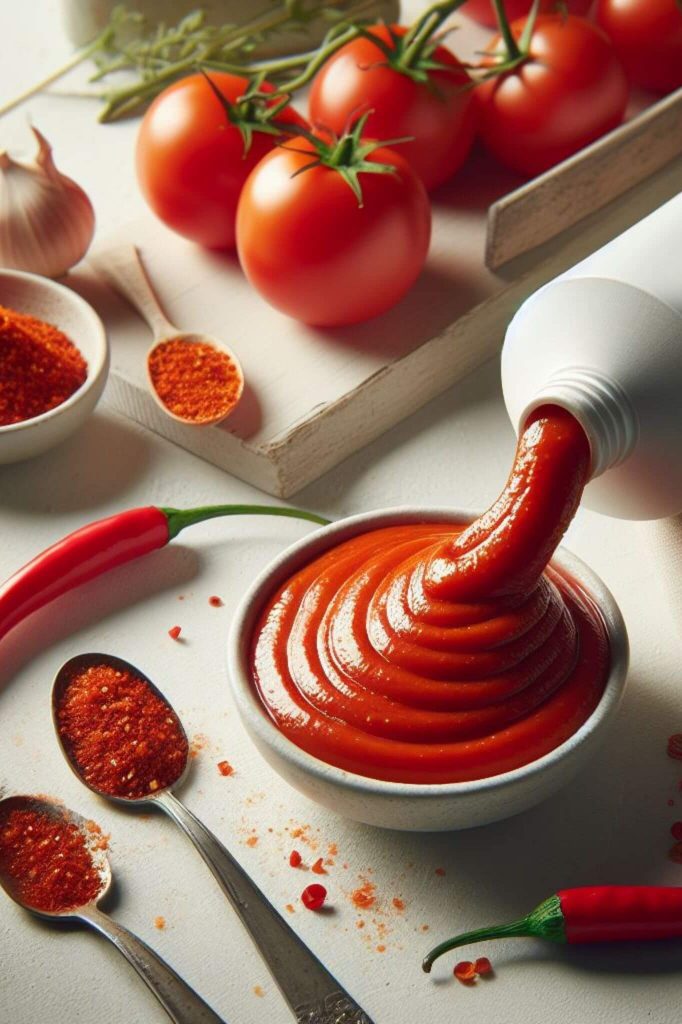
Turmeric & Chili Paste
Turmeric with chili paste combines the earthy, warm notes of turmeric with the fiery kick of chili, offering a distinctive flavor profile. Using it as a substitute for red curry paste can add a unique twist to your dishes.
If you have these two ingredients in your pantry, you can create your own paste. Here’s how you can incorporate turmeric with chili paste:
- Understand the Flavor Combination: Turmeric with chili paste brings a warm, earthy flavor from turmeric along with the heat from chili. This combination differs from the complex and spicier red curry paste.
- Quantity Adjustment: Start with a smaller amount of turmeric with chili paste compared to the red curry paste called for in the recipe. This allows you to control the intensity of both the turmeric and chili flavors.
- Balancing Flavors: Red curry paste provides not only heat but also depth and richness. To balance, consider adding ingredients like coconut milk, ginger, and garlic. Adjust sweetness and acidity with sugar or lime juice as needed.
- Cooking Technique: Sauté the turmeric with chili paste in oil to release its flavors. This step helps it blend into the dish. Note that you may need less oil compared to when using red curry paste.
- Taste and Adjust: Regularly taste your dish as it cooks and adjust the quantity of turmeric with chili paste accordingly. This ensures you achieve the desired level of both warmth from turmeric and heat from chili.
- Visual Appeal: While turmeric adds a golden-yellow hue, it might not provide the same vibrant color as red curry paste. You can always add a small amount of paprika for a more intense reddish color.
Using turmeric with chili paste as a substitute allows you to infuse a warm and spicy kick into your recipes. It’s a creative choice, especially for dishes that can benefit from the rich, earthy notes of turmeric.
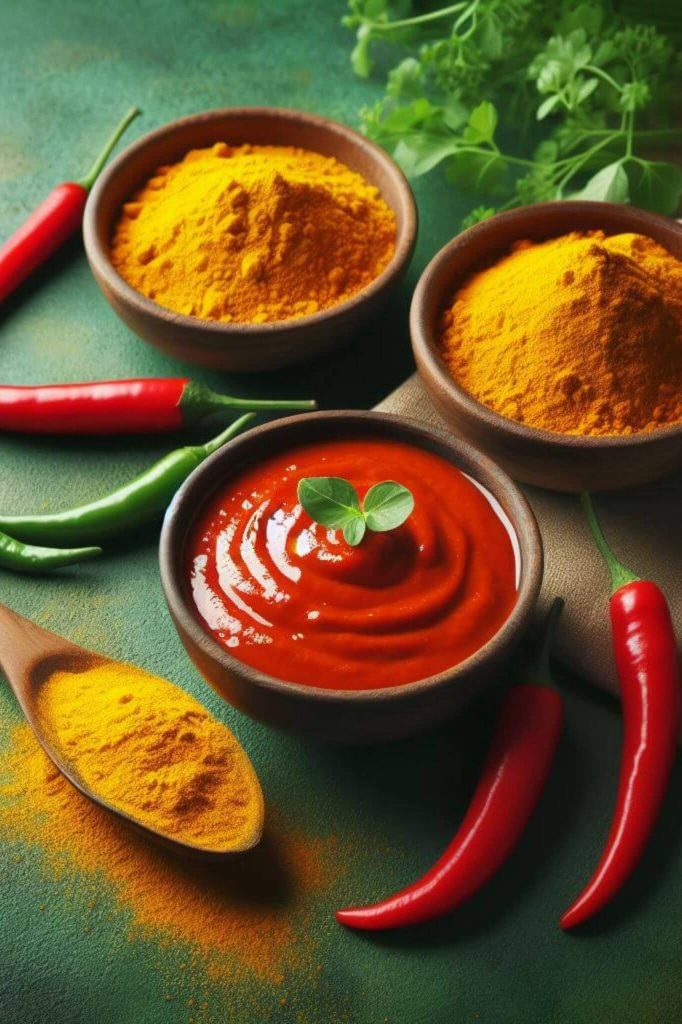
Garlic & Chili Sauce
Garlic and chili sauce is a flavorful blend of garlic and red chili, creating a spicy and aromatic condiment. Using it as a substitute for red curry paste can bring a bold and zesty flavor to your dishes.
You can use any shop-bought chili sauce, and simply add fresh crushed garlic, to create the infused sauce. Here’s how you can incorporate garlic and chili sauce:
- Understand the Flavor Profile: Garlic and chili sauce offers a strong garlic kick along with spicy heat from the chilies. This flavor profile differs from the complexity of red curry paste.
- Quantity Adjustment: Begin with a smaller amount of garlic and chili sauce compared to the red curry paste called for in the recipe. This allows you to gauge the intensity of both the garlic and chili flavors.
- Balancing Flavors: Red curry paste provides not only heat but also depth and richness. To balance, consider adding ingredients like coconut milk, ginger, and additional garlic. Adjust sweetness and acidity with sugar or lime juice as needed.
- Cooking Technique: Sauté the garlic and chili sauce in oil to release its flavors. This step helps it meld into the dish. Note that you may need less oil compared to when using red curry paste.
- Taste and Adjust: Regularly taste your dish as it cooks and adjust the quantity of garlic and chili sauce accordingly. This ensures you achieve the desired level of both garlic intensity and chili heat.
- Visual Consideration: While garlic and chili sauce may not provide the same vibrant color as red curry paste, it can add a rich, glossy coating to your dish. If visual appeal is crucial, you can add a small amount of paprika for a reddish hue.
Using garlic and chili sauce as a substitute brings a punch of garlic flavor and spice to your recipes. It’s a versatile choice, especially for those who enjoy robust, savory dishes.
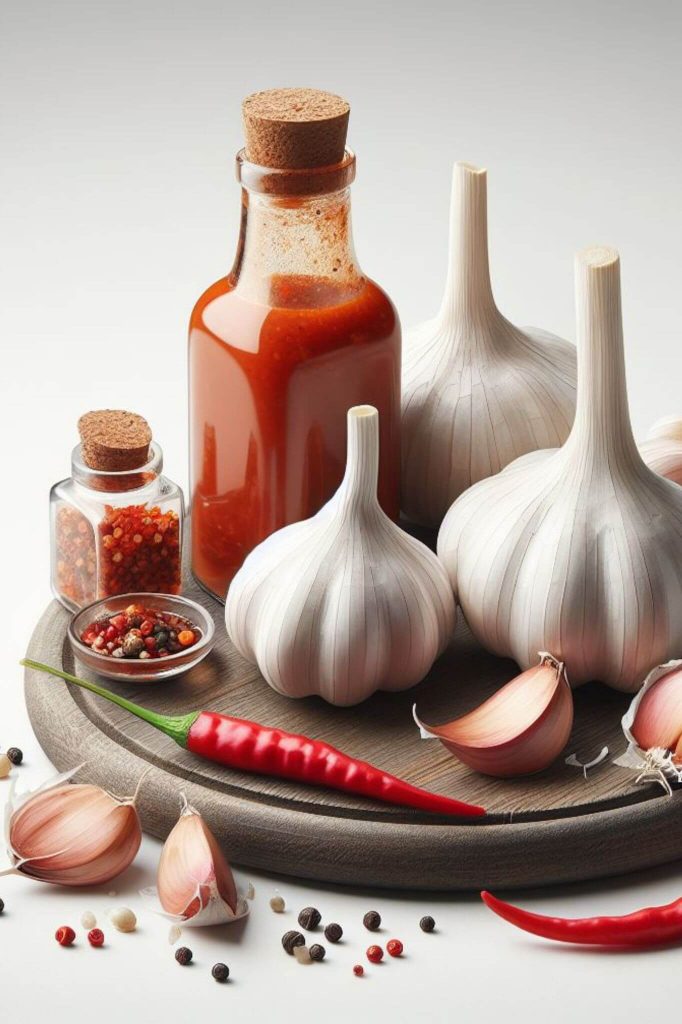
Garlic & Tomato Paste
Using garlic and tomato paste as a substitute for red curry paste can add a unique twist to your dishes. You may already have these two ingredients in your pantry, simply combine the two together to create an infused paste.
Here’s how you can incorporate it:
- Understand the Flavor Profile: Garlic and tomato paste provides a rich, savory flavor with the sweetness of tomatoes and the pungency of garlic. While it won’t replicate the complex spiciness of red curry paste, it can offer a delicious alternative.
- Quantity Adjustment: Begin with a smaller amount of garlic and tomato paste compared to the red curry paste called for in the recipe. This allows you to control the intensity of both the garlic and tomato flavors.
- Balancing Flavors: Red curry paste not only brings heat but also depth and richness. To balance, consider adding ingredients like coconut milk, ginger, and additional garlic. Adjust sweetness and acidity with sugar or lime juice as needed.
- Cooking Technique: Sauté the garlic and tomato paste in oil to release its flavors. This step helps it meld into the dish. Note that you may need less oil compared to when using red curry paste.
- Taste and Adjust: Regularly taste your dish as it cooks and adjust the quantity of garlic and tomato paste accordingly. This ensures you achieve the desired balance of garlic and tomato flavors.
- Visual Consideration: While garlic and tomato paste may not provide the same vibrant color as red curry paste, it can add a rich, reddish hue to your dish. If visual appeal is crucial, you can enhance it with a small amount of paprika or additional tomato paste.
Using garlic and tomato paste as a substitute introduces a savory and tangy element to your recipes. It’s a creative choice, especially for those who enjoy the combination of garlic and tomatoes.
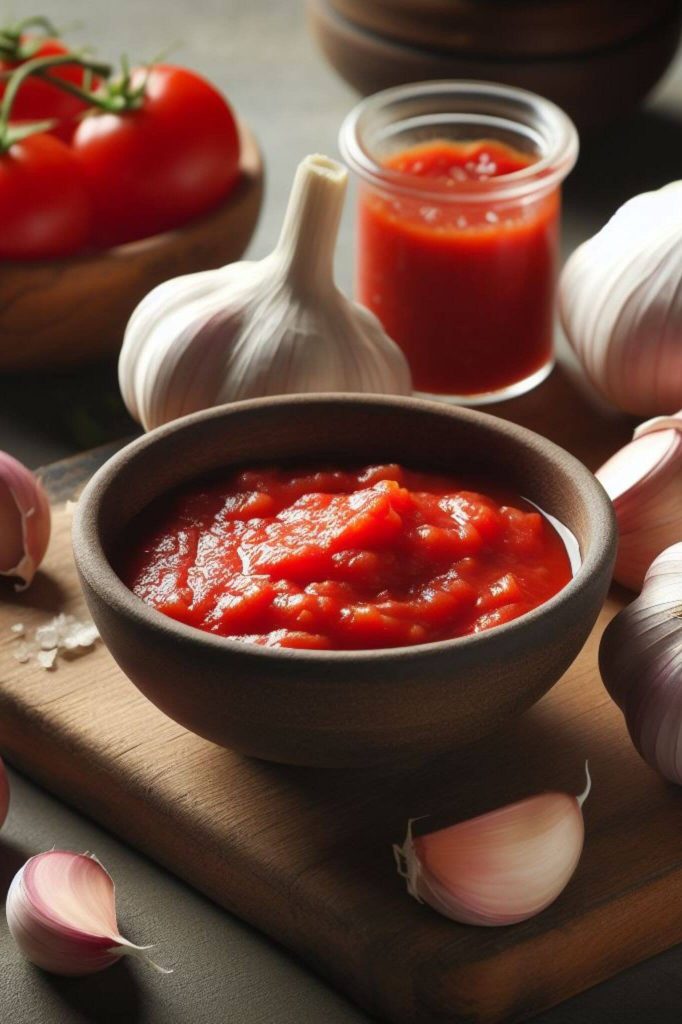
Curry Powder
Curry powder is a blend of various ground spices, commonly including turmeric, coriander, cumin, fenugreek, and chili powder. The specific composition can vary, and it’s widely used in Indian cuisine to impart a complex, warm flavor and vibrant color to dishes.
If you’re looking to use curry powder as a substitute for red curry paste, here’s how you can incorporate it:
- Understand the Flavor Profile: Curry powder offers a blend of spices, providing warmth and depth to dishes. It is a dry mix, rather than a paste. While it won’t replicate the specific taste of red curry paste, it can add a flavorful twist.
- Quantity Adjustment: Begin with a smaller amount of curry powder compared to the red curry paste called for in the recipe. Curry powder can be quite potent, and you can adjust the quantity based on your taste preferences.
- Balancing Flavors: Red curry paste not only brings heat but also a rich, spicy complexity. To balance, consider adding ingredients like coconut milk, ginger, and garlic. Adjust sweetness and acidity with sugar or lime juice as needed.
- Cooking Technique: You can directly add curry powder to your dish during the cooking process. Sauté it in oil or incorporate it into the dish’s liquid to allow the spices to release their flavors.
- Taste and Adjust: Regularly taste your dish as it cooks and adjust the quantity of curry powder accordingly. This ensures you achieve the desired balance of flavors.
- Visual Consideration: While curry powder won’t provide the same vibrant color as red curry paste, it imparts a warm, golden hue to your dish. If visual appeal is crucial, you can enhance it with a small amount of paprika for a reddish tint.
Using curry powder as a substitute allows you to infuse warm, aromatic flavors into your recipes.
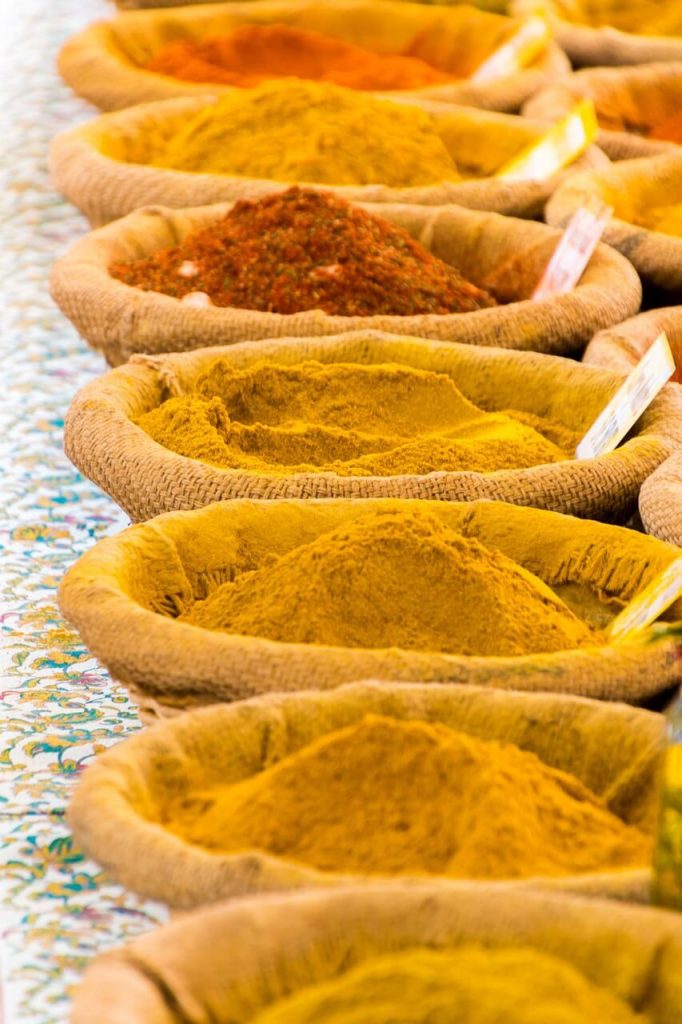
Homemade Red Curry Paste
Create your own red curry paste by blending red chilies, garlic, lemongrass, ginger, and a dash of spice. Customize the heat level to your liking and enjoy the satisfaction of homemade goodness.
Whipping up your own homemade red curry paste is really quite simple – here’s an easy recipe to get you started:
Ingredients:
- 10-12 dried red chilies (soaked in hot water for 15-20 minutes)
- 2 stalks lemongrass (tender inner part), chopped
- 1 tablespoon galangal or ginger, chopped
- 4 cloves garlic
- 2 shallots, chopped
- 1 teaspoon coriander seeds, toasted
- 1 teaspoon cumin seeds, toasted
- 1/2 teaspoon peppercorns, black or white
- 1 teaspoon shrimp paste (optional, for authentic Thai flavor)
- Zest of 1 lime
- 2 tablespoons tomato paste
- 1 tablespoon soy sauce
- 1 tablespoon fish sauce (or more soy sauce for a vegetarian version)
- 2 tablespoons vegetable oil
Instructions:
- Prepare the Chilies: After soaking the dried red chilies, remove the seeds for a milder paste. Keep some seeds if you like it spicier.
- Blending: In a blender or food processor, combine soaked chilies, lemongrass, galangal/ginger, garlic, shallots, coriander seeds, cumin seeds, peppercorns, shrimp paste (if using), lime zest, tomato paste, soy sauce, and fish sauce.
- Blend to a Paste: Blend until you achieve a smooth, vibrant paste. You may need to scrape down the sides and blend again for consistency.
- Cooking: Heat vegetable oil in a pan and sauté the paste over medium heat for 5-7 minutes until fragrant. This cooking step enhances the flavors.
- Cooling: Let the paste cool before transferring it to a jar. It’s now ready to use in your favorite recipes.
Feel free to adjust the ingredients to suit your taste preferences, whether you want it spicier, milder, or with a unique twist. Homemade red curry paste adds a personal touch to your dishes, and the aroma will make your kitchen feel like a Thai haven!
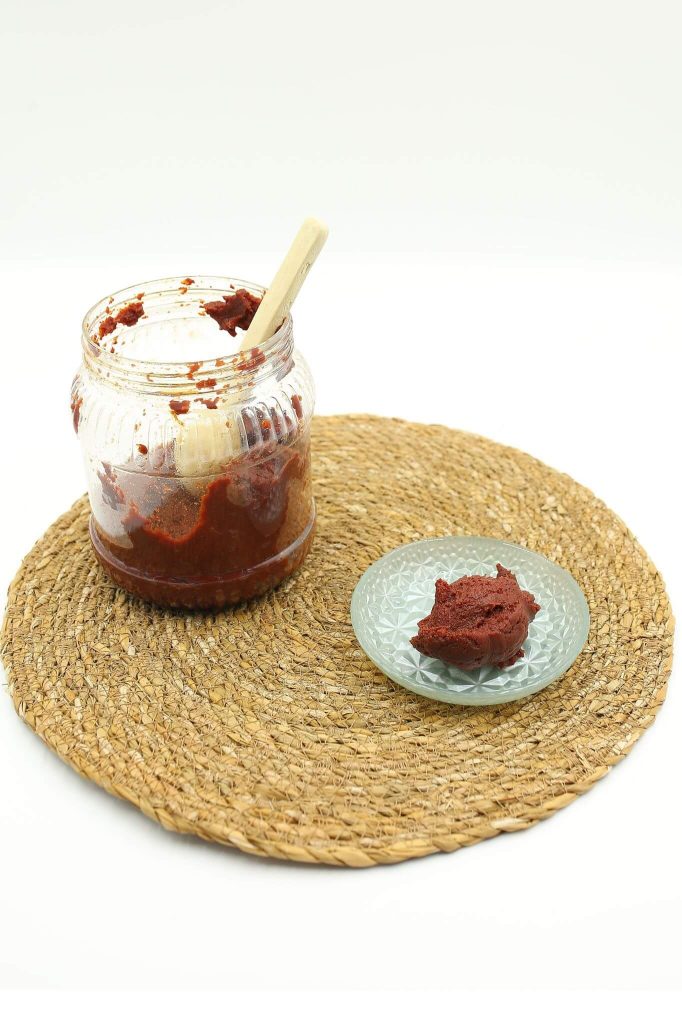
FAQs
Can you make curry paste with curry powder?
Absolutely! While traditional curry paste usually involves fresh ingredients like herbs and spices, you can certainly make a quick and easy version using curry powder. Mix curry powder with some garlic, ginger, a bit of tomato paste, and a splash of oil. Adjust the quantities to suit your taste preferences. It won’t be exactly like the traditional paste, but it’ll add a burst of curry flavor to your dishes. Feel free to experiment and tailor it to your liking – that’s the beauty of cooking!
What is the difference between red curry paste and curry powder?
Red curry paste and curry powder are both flavorful additions to dishes, but they have distinct differences. Red curry paste is a Thai ingredient made from a blend of red chilies, garlic, lemongrass, galangal, shrimp paste, and various spices. It’s often used in Thai curries and adds a bold and aromatic kick.
On the other hand, curry powder is a blend of dry ground spices commonly used in Indian cuisine. It typically includes coriander, turmeric, cumin, fenugreek, and other spices. Curry powder provides a warm and earthy flavor, and it’s versatile enough to be used in various dishes, not just curries.
In summary, the main differences lie in their origins, ingredients, and flavor profiles. If you’re aiming for Thai-inspired dishes, go for red curry paste, while curry powder is great for a broader range of global cuisines with an Indian influence.
What is a substitute for garam masala in red curry paste?
If you’re out of garam masala and need a substitute for your red curry paste, don’t worry! You can always create a flavorful alternative by combining common spices. Mix equal parts of ground cumin, coriander, and cardamom. This blend will bring a warm, aromatic quality similar to garam masala. Adjust the quantities to match your taste preferences, and feel free to experiment with a pinch of cinnamon or cloves for added depth. It might not be an exact match, but it’ll add a delightful complexity to your red curry paste.
Summary for Red Curry Paste substitutes
Okay – that’s you all sorted with suitable substitutes for Red Curry Paste.
Here’s a quick recap for you:
- Curry Paste: Versatile base, but may lack the specific heat of red curry.
- Green Curry Paste: Similar Thai flair, with a spicier, herbaceous kick.
- Chilli Powder: Adds heat and color; just adjust quantity to match your spice preference.
- Chilli Paste: Concentrated spice, intensifies flavor; always start with a small amount.
- Tomato Paste with Chili Flakes: Rich, with a hint of heat; helps balances acidity with spice.
- Turmeric & Chili Paste: Earthy and spicy; enhances color and also flavor.
- Garlic & Chili Sauce: Garlic kick with moderate heat; a flavorful combo.
- Garlic & Tomato Paste: Garlic depth with a touch of sweetness; mild heat.
- Curry Powder: A blend of spices; less heat, and more complexity.
- Homemade Curry Paste: Customizable; blend chilies, garlic, and spices for a unique touch.
We have gathered together a lot more facts on ingredients such as herbs, spices, oils, nuts, etc. if you would like to learn some more.
Or if you need to swap out another ingredient have a look at our Substitutes section.
